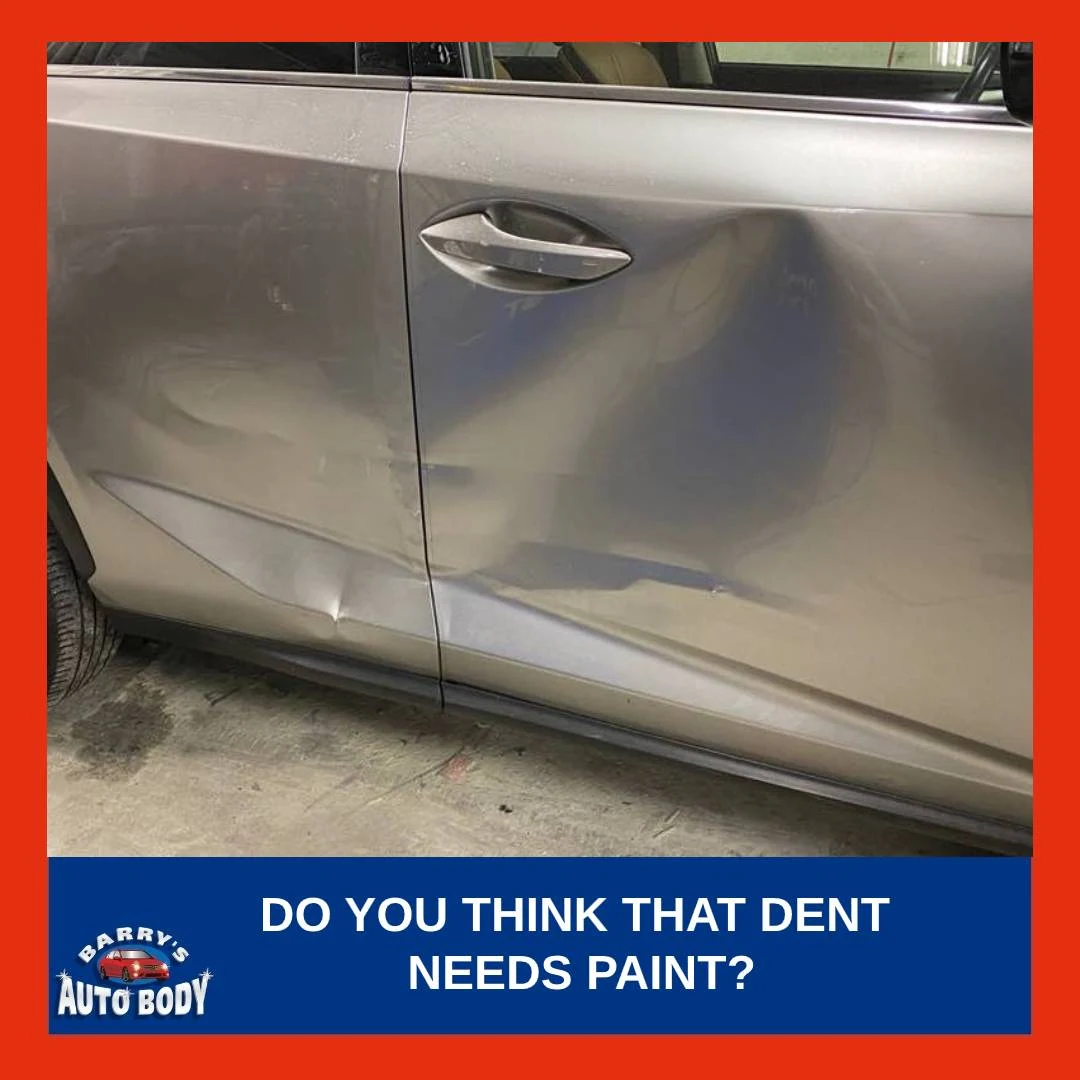You’ve just noticed a new dent on your vehicle, maybe from a rogue shopping cart, hailstorm, or minor bump in a crowded parking lot. Your initial reaction might be frustration, followed by wondering how much it might cost to fix and whether you’ll need to repaint your car. However, there’s good news: your dent might be a perfect candidate for Paintless Dent Repair (PDR), a potentially quicker, more cost-effective solution that maintains your car’s original finish.
In this guide, we’ll explore everything you need to know about PDR, from understanding when it’s appropriate, its benefits, potential limitations, and why professional service could be your best bet.
Understanding Paintless Dent Repair
Paintless Dent Repair (PDR) is a specialized method of repairing dents that carefully manipulates the metal back to its original shape without damaging the paint finish. Unlike traditional repair, PDR avoids sanding, filling, or repainting.
How Does PDR Work?
- Technicians use special tools designed to massage dents from behind the affected panel gently.
- The method involves carefully applying precise pressure and gradually restoring the panel without affecting your car’s paint job.
Common Dents Suitable for PDR Include:
- Small dents caused by door dings.
- Minor dents from hail damage.
- Shallow creases and dents that haven’t compromised the paint.
When Paintless Dent Repair Is a Good Option
1. Minor to Moderate Dents
Generally, minor dents (approximately the size of a golf ball or smaller) are ideal for PDR.
- Dents from everyday incidents, such as minor parking lot mishaps.
- Dents from small hailstones.
2. The Paint Surface is Still Intact
For successful PDR, the original paint must be undamaged.
- Check your vehicle closely for signs like cracks, chips, or deep scratches.
- PDR might be an excellent solution if your paint remains smooth and intact.
3. Recent and Accessible Damage
The sooner you address the dent, the better your chances are for successful repair.
- Fresh dents typically respond better because the metal hasn’t had time to stretch excessively or rust.
- Accessibility is crucial—dents in open panels like doors, hoods, and trunks are generally easier to fix using PDR.
Benefits of Choosing Paintless Dent Repair
1. Cost-Effectiveness
PDR can often be more affordable than traditional body repair.
- You might save significantly by eliminating the need for painting, materials, and extensive labor.
- Cost savings could be substantial for multiple minor dents, such as those caused by hailstorms.
2. Preserves Original Vehicle Finish
Maintaining your car’s original paint can protect its resale value.
- Factory paint is typically more resilient and aesthetically pleasing.
- Repainting may lead to mismatched colors or visible repairs, which can decrease vehicle value.
3. Faster Repair Times
Repairs using PDR typically take a few hours rather than days.
- Traditional repairs require drying and curing time after repainting.
- PDR allows you to get back on the road faster, minimizing disruption.
4. Environmentally Friendly
Because PDR doesn’t involve harsh chemicals, paints, or solvents, it’s considered environmentally friendly.
- Reduces environmental pollutants commonly associated with auto repair.
When Paintless Dent Repair Might Not Be the Best Choice
Despite its advantages, PDR isn’t suitable for every dent:
- Deep, sharp dents that significantly stretch the metal.
- Damage with extensive paint loss, chips, or cracks.
- Dents are located near the edges of panels or in difficult-to-reach spots.
In such cases, traditional auto body repair methods might be required for proper restoration.
DIY Paintless Dent Repair: Is It Worth Trying?
You might find DIY kits online or in auto stores promising easy home repairs. Here’s what you need to know before trying them:
Potential Challenges:
- DIY attempts could worsen the dent or damage the paint.
- Achieving professional-quality results can be difficult without proper training and experience.
When DIY Could Be Practical:
- Very minor, shallow dents that don’t require extensive manipulation.
- Situations where perfection isn’t essential, and minor imperfections are acceptable.
Recommended Action:
- Consider a professional assessment first to avoid potentially costly mistakes.
Why Professional Paintless Dent Repair Is Often Recommended
Professional PDR offers numerous advantages due to technicians’ specialized skills and tools:
- Professionals use precision instruments specifically designed for delicate, precise adjustments.
- Technicians are trained to evaluate dent severity accurately and choose the best approach for optimal outcomes.
Choosing a professional ensures:
- High-quality, lasting results.
- Protection of your car’s value by maintaining the original finish.
- Confidence that repairs will meet your expectations without unintended additional damage.
How Barry’s Auto Body Can Help
Barry’s Auto Body has extensive experience providing reliable, high-quality Paintless Dent Repair services.
- Technicians are ASE-certified and skilled in PDR techniques.
- Equipped with modern, specialized tools ensuring accurate and careful repairs.
- Committed to providing clear communication and transparent assessments.
- Dedicated to environmentally friendly auto repair practices.
If you’re unsure whether your dent qualifies for PDR, Barry’s Auto Body technicians can provide comprehensive assessments and guide you toward the best solution.
Choosing Paintless Dent Repair for minor dents can offer cost-effective, efficient, and environmentally friendly results while preserving your car’s original value and finish. However, evaluating your specific dent’s suitability for PDR is essential.
Barry’s Auto Body is here to help you determine the best repair method for your vehicle’s unique needs. Contact us today for an assessment if you’ve recently had a dent. PDR is the ideal, hassle-free solution you’ve been looking for.

